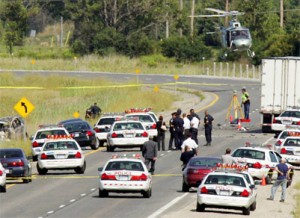
Fifty years ago, it was a bold statement. Pierre Elliott Trudeau declared publicly that “there’s no place for the state in the bedrooms of the nation.” As Minister of Justice, Trudeau introduced The Criminal Law Amendment Act or C-195 on December 21st, 1967. The omnibus bill proposed controversial reforms to the Criminal Code including the decriminalization of homosexuality and the legalization of abortion under certain conditions.
Days before Trudeau tabled the bill, Prime Minister Lester B. Pearson tendered his resignation and Cabinet Members questioned the bill’s language, suggesting it be pushed to later session. Trudeau urged them to proceed with the reforms, regardless of timing or politics: “If the government was prepared to deal with abortion, it might just as well deal with gross indecency as well.”
(Please click the link below to view some Cabinet Conclusions from December 19th, 1967.)
The legislation was amended and passed as Bill C-150 when Trudeau was prime minister.
Rebecca Bromwich is a lawyer and a professor at Carleton University. Bromwich describes the legislation as a “watershed” event in Canadian criminal law which allowed for further legal reforms and for the development of a more accepting society.
“People have called it the “Bedroom Bill” because it moved criminal law out of a kind of moralizing of people’s sexuality into a very kind of different perspective on what types of conduct should be criminal,” Bromwich says. “And so it decriminalized homosexuality. And at the time, there were people in penitentiaries serving time for same-sex, sexual conduct.”
(Please click the link below to see the introduction of Bill C-195 to the House on December 21st, 1967.)
Bromwich explains that the charge of “gross indecency” criminalized consensual sexual contact. At the time, she says there was no recognition of same-sex sexual contact and no distinction between assaultive and consensual sexual contact in this area of law.
“It was all an abomination. It was all criminal,” Bromwich says.
The last person to be criminally convicted for homosexual acts was Everett Klippert. Prior to the reforms, Klippert was incarcerated twice on dozens of charges of gross indecency in the 1960s. Following his last conviction, he filed an application for leave to appeal to the Supreme Court of Canada on the charge of “dangerous sexual offender.”
After the application to appeal was granted, lawyer Brian Crane received a request to assist Klippert. Crane drafted a factum and appeared before the Supreme Court, arguing Klippert’s case briefly in the early stage of his appeal.
“It was a question of whether the law was appropriate. And that was the issue – a pretty simple issue,” Crane says.
In November 1967, Klippert lost the appeal at the Supreme Court in a 3-2 ruling. The dissenting justices wrote reasons “indicating the unsatisfactory state of the law,” Crane remembers. He also recalls the case being cited in the House by different parliamentarians. Crane describes Klippert’s case as having a “significant effect” on the Liberal omnibus bill.
“It became a matter of public attention and it certainly was one of the factors, if not the major factor, in having that legislation come forward.” Crane says.
Decades later, with a second Prime Minister Trudeau in office, the question of legal legacy arises. In November, the government announced the repeal Section 159 of the Criminal Code – a law widely-held as discriminatory to homosexual Canadians. This week, they announced further revisions with the removal of “zombie laws” on abortion and other areas.
But the legal history raises another concern for Klippert’s lawyer. Crane asks about a general pardon for those like Klippert, convicted of similar crimes.
“It’s righting a historical wrong,” Crane says. “And I think from the gay rights perspective it would be, would be certainly, important and useful and I imagine would get unanimous consent in the House.”
In 2016, Prime Minister Justin Trudeau’s government announced its recommendation for Klippert’s posthumous pardon but it has yet to be granted.
“To have a pardon – it’s an important historical act, I would think. An act of recognition,” Crane says.
Brian Crane is a partner at the Gowling WLG law firm in Ottawa.
—————————————————————
Documentation Notes for the Instructors:
Document 1
What is the documentation?
The debates or Hansard from the House of Commons on December 21st, 1967.
How did you find/obtain it?
After looking through different government archives online, I reached out to a source at the Canadian Parliamentary Press Gallery. The source was able to locate the Hansard and send me a copy. We verified the copyright conclusions prior to posting online.
Why was the documentation helpful?
It was helpful though the tabling of C-195 was succinct. It was my assumption that lengthier debate ensued after the Minister of Justice Pierre Trudeau tabled the bill on the floor; however, it went to committee it seems. The bill was amended (to C-150) over several parliamentary sessions and years, therefore there was much documentation to sift through ultimately. This was a useful perspective for the initial C-195 tabling.
Document 2
What is the documentation?
A selection of Cabinet Conclusions from December 19th, 1967 which notes discussion on the Criminal Code reforms.
How did you find/obtain it?
I accessed it through different searches on the Library and Archives Canada website.
Why was the documentation helpful?
It was very helpful. There were numerous Cabinet Conclusions from the week before the bill was tabled that were incredibly interesting. The internal politics at the end of that particular session appeared tenuous – not to mention the wider societal political context. Specifically, the documentation helped me to better understand the discussion around the bill’s language and timing. It also re-inforced the idea that Minister of Justice Trudeau was adamant about the bill’s tabling at the end of 1967.
Additional Documents
I also included hyperlinks to the Klippert Supreme Court Case in 1967 and to Pierre Elliott Trudeau’s 1967 comments to the media for added reference.










